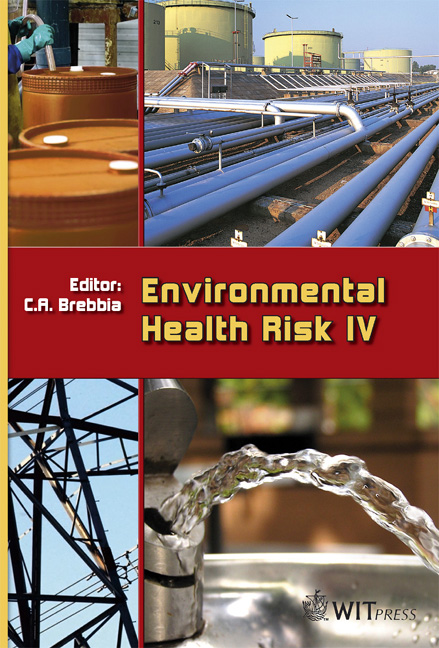Use Of The In Vitro Model For The Evaluation Of Toxic Effects Of Metabolites Produced By Fungi
Price
Free (open access)
Transaction
Volume
11
Pages
6
Published
2007
Size
369 kb
Paper DOI
10.2495/EHR070091
Copyright
WIT Press
Author(s)
Z. Kováčiková, E. Piecková, E. Tátrai, Z. Pivovarová & M. Mataušic-Pišl
Abstract
There are several reports about chronic intoxications, allergies or other pulmonary health problems of dwellers (especially babies) and workers from buildings contaminated with microfungi. Material from presented work was collected during the study of indoor fungal colonization of mouldy dwellings and public buildings in Slovakia. The isolated fungi were cultivated for 10 days in liquid media and their products – both endo- and exometabolites were isolated. The metabolites from four isolates of Stachybotrys chartarum, two of Aspergillus versicolor and one of Penicillium chrysogenum were used. Their effects were studied in vitro on rat alveolar epithelial type 2 cells, from the toxicological point of view one of the most important lung cells type. Type 2 cells were cultured for 20 hours in DMEM and then they were exposed for 24 hours to various concentrations of metabolites. The toxicity was evaluated by staining the cells for alkaline phosphatase which is a marker for this cell type. The toxic effect of metabolites from all isolates of Stachybotrys chartarum was dose dependent, there were differencies in the extent of cytotoxicity. From the tested microorganisms Stachabotrys chartarum and Aspergillus versicolor showed high toxic effects (Stachybotrys higher than Aspergillus), while Penicillium chrysogenum only minor toxic effects in this test. Keywords: alveolar epithelial type 2 cells, Stachybotrys chartarum, Aspergillus versicolor, Penicillium chrysogenum, metabolites.
Keywords
alveolar epithelial type 2 cells, Stachybotrys chartarum, Aspergillus versicolor, Penicillium chrysogenum, metabolites.





